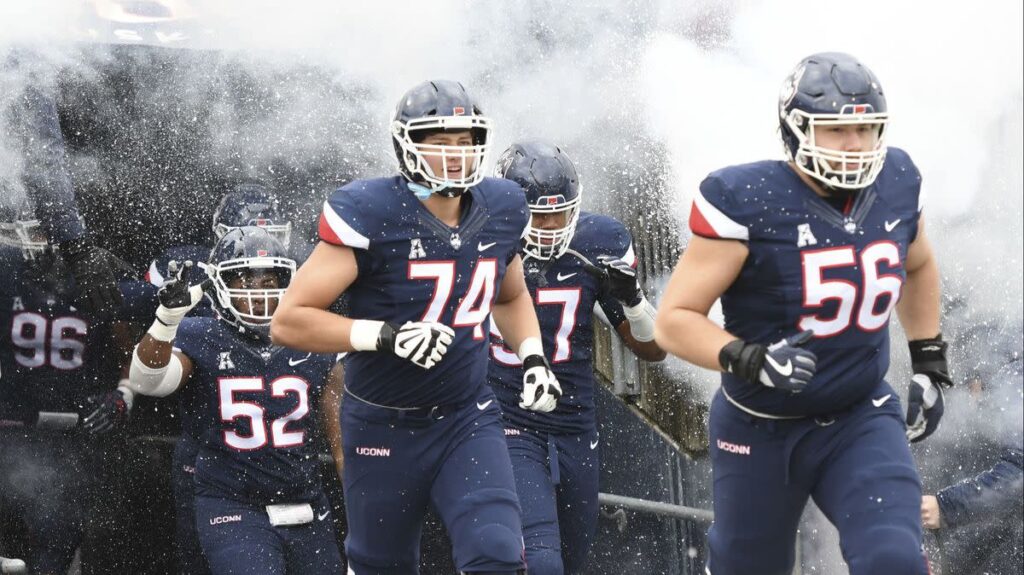Team History
The UConn Huskies football program has a rich history dating back to its founding in 1896. While the team has experienced fluctuations in its level of success, they have built a dedicated fanbase and established themselves as a presence within collegiate football. In recent years, UConn has faced challenges as an independent program, but the Huskies remain a team with a unique story and a passionate following.
UConn’s football program has undergone significant transformation throughout its history. What began as a small, regional program eventually rose to the top tier of college football, only to return to its independent roots amidst realignment within the NCAA. The Huskies’ journey reflects the evolving landscape of college athletics, a testament to their adaptability and resilience.
Foundation and Early Years
The University of Connecticut fielded its first football team in 1896, starting out as a modest program competing against local schools. During these formative years, the Huskies played under various names, including the Storrs Aggies, referencing the university’s agricultural roots. It wasn’t until 1933 that the program officially adopted the “Huskies” moniker, marking a turning point in the team’s identity.
Despite their humble beginnings, UConn began to make a name for themselves within the New England region. Victories over rivals like Rhode Island and Maine became regular occurrences. The program’s early success, while localized, laid the groundwork for future ambitions and a growing appreciation for the game within the university community.
Notable Early Achievements
While national recognition eluded the Huskies during their first several decades, they achieved significant milestones. One such highlight was the undefeated season of 1940. During this golden year, fans witnessed a dominant UConn team that outscored its opponents with a staggering cumulative score of 247 to 6.
The program also produced some notable individual stars during its early phase. Legends like Walt Dropo, later a Major League Baseball standout, graced the field in Storrs. Such figures helped to elevate the profile of the team and solidify a tradition of athletic excellence within the university.
Periods of Change
UConn football faced various transformative periods throughout its history. In the 1970s, it became a Yankee Conference powerhouse. After years of steady progress, the Huskies became a force to be reckoned with. They won several conference titles, setting the stage for a more ambitious future.
The Huskies made the leap to Division I-AA (now known as FCS) football in 1979. This transition marked a major turning point, as it brought with it greater opportunities but also increased competition. In 2000, UConn again elevated its status by moving to the top tier of the NCAA, then called Division I-A (now FBS).
Championships and Achievements
While national championships have been elusive for the Huskies, they’ve celebrated numerous conference titles. Their Yankee Conference dominance in the 1970s was followed by success in the Atlantic 10 during the 1990s. The Huskies’ biggest breakthrough came after their jump to Division I-A, when they shared the Big East Conference championship title in 2004, 2007, and 2010.
Beyond conference championships, UConn earned several bowl game invitations. This included a thrilling appearance in the 2011 Fiesta Bowl, which marked a pinnacle for the program. While the outcome was not ideal, it represented the Huskies’ arrival as a nationally recognized program capable of competing at the highest level.
Management and Coaching Staff
The UConn Huskies are led by Head Coach Jim L. Mora, who brings a wealth of experience from both the NFL and collegiate coaching ranks. He’s surrounded by a dedicated staff of assistant coaches, coordinators, and analysts who all work to cultivate talent and implement a winning strategy.
Home Stadium Information
The UConn Huskies play their home games at Pratt & Whitney Stadium at Rentschler Field in East Hartford, Connecticut. This modern stadium has a capacity of 40,000, providing an ample venue for the team’s dedicated fanbase. The stadium boasts amenities like comfortable seating, a variety of concessions, and a spacious scoreboard, enhancing the game-day experience for fans.
-
*********** ***** ******* *** ***** ** ************ **** ********* *****dd.mm.yyyy 00:00 PM
-
****** *********** **** ** ***** ****** *** **** *** ******: ********* *** ******* *** ****'* ****dd.mm.yyyy 00:00 PM
-
*********-***** ********: **** 6 **** *** ***** *** * ********* **** 7dd.mm.yyyy 00:00 PM
-
**********-************ *******: ****** ****ć, ******* *******, *** * ********* ********** ********dd.mm.yyyy 00:00 PM
-
********* **** ********* ** *** ***: ********* *** ********* ** ****** ******** **. *** *** *****dd.mm.yyyy 00:00 PM
-
****************** ******* **********: *** ********' **** ****dd.mm.yyyy 00:00 PM







